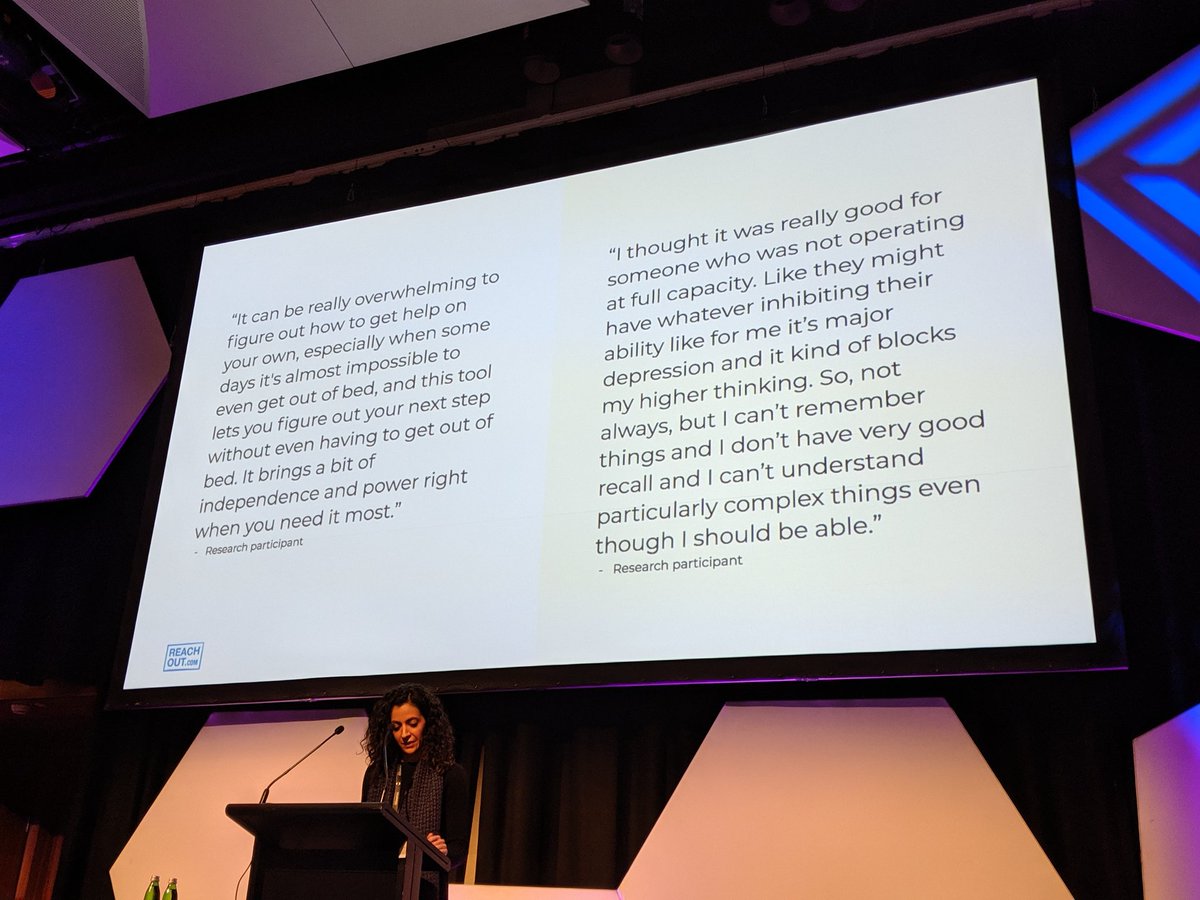#uxaustralia
Self efficacy and autonomy are barriers that prevent young people seeking help.
The process is:
Assessing
Accepting
Acting
And it is non linear and very easy to become overwhelmed.
They used the 4 digit pin if the young person wanted to use it to protect their session data. They self select it and have control over the option.
If they return they have 3 attempts to connect to the session
They added a number of different ways to select the issues to reduce the likelihood of drop off.
For young people seeking help the less cognitive load the better, not having to enter information makes them more.likely to continue the process.
#uxa19















